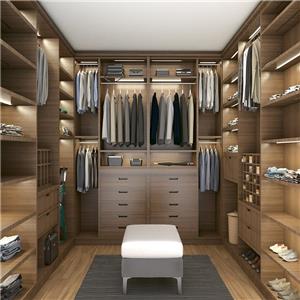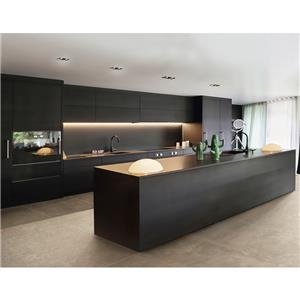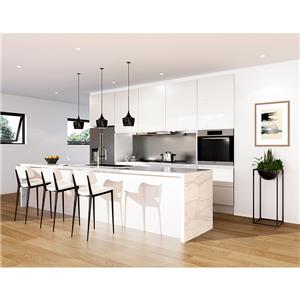-
1307-2024
How to Choose the Right Wood Kitchen Cabinet for You
To choose a wooden kitchen cabinet that suits you, you should first consider the type of wood, such as oak, cherry, etc. Each type of wood has different characteristics and needs to be determined according to the kitchen environment and personal preferences. Secondly, evaluate the quality of craftsmanship. High-quality kitchen cabinets should have a stable structure, smooth surface, and exquisite details. Furthermore, according to the kitchen layout and usage habits, choose a suitable cabinet style, such as a straight, L-shaped, or U-shaped, to ensure reasonable flow and efficient storage. At the same time, combined with the overall home decoration style, choose coordinated colors and designs to enhance the beauty of the space. Finally, consider the budget and after-sales service to ensure high cost performance and worry-free purchase. By comprehensively considering these factors, you can choose the ideal wooden kitchen cabinet.
-
0407-2023
The Ultimate Storage Solution: Unleashing the Power of 24-Inch Deep Wall Cabinets
The Ultimate Storage Solution: Unleashing the Power of 24-Inch Deep Wall Cabinets
-
0407-2023
Unlocking the Hidden Potential: The Benefits of 18-Inch Deep Wall Cabinets
Unlocking the Hidden Potential: The Benefits of 18-Inch Deep Wall Cabinets
-
3006-2023
Maximizing Space and Efficiency with 18 Deep Wall Cabinets
Maximizing Space and Efficiency with 18 Deep Wall Cabinets
-
1606-2023
Alternative Methods for Installing Wall Cabinets Without Studs: A Step-by-Step Guide
Methods for installing wall cabinets without relying solely on studs include the French cleat system, toggle bolts or Molly bolts, wall anchors, horizontal blocking, cleats or rails, and adhesive mounting. These alternative methods provide additional support and stability, allowing for secure installation on various wall surfaces. Consider factors such as cabinet weight, wall conditions, and desired adjustability when selecting the appropriate method for your specific installation needs.




